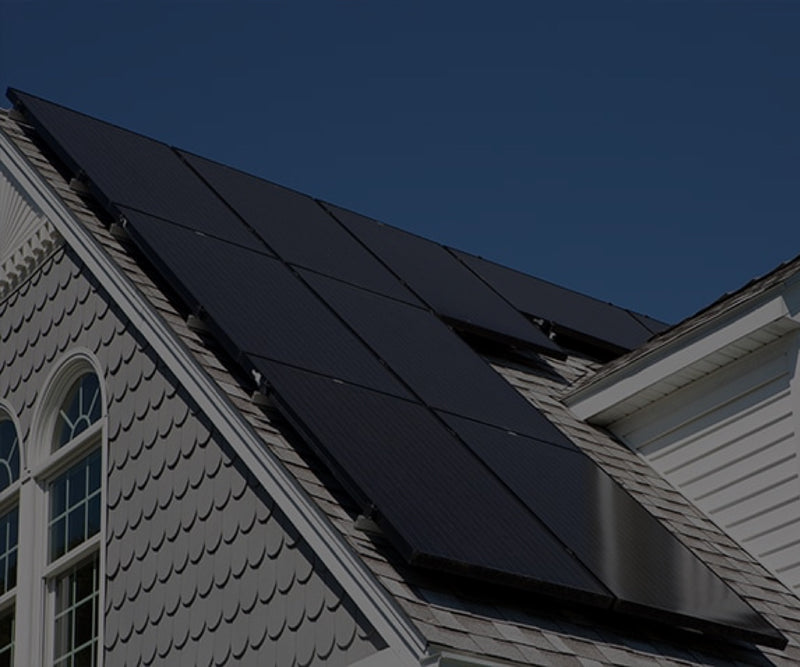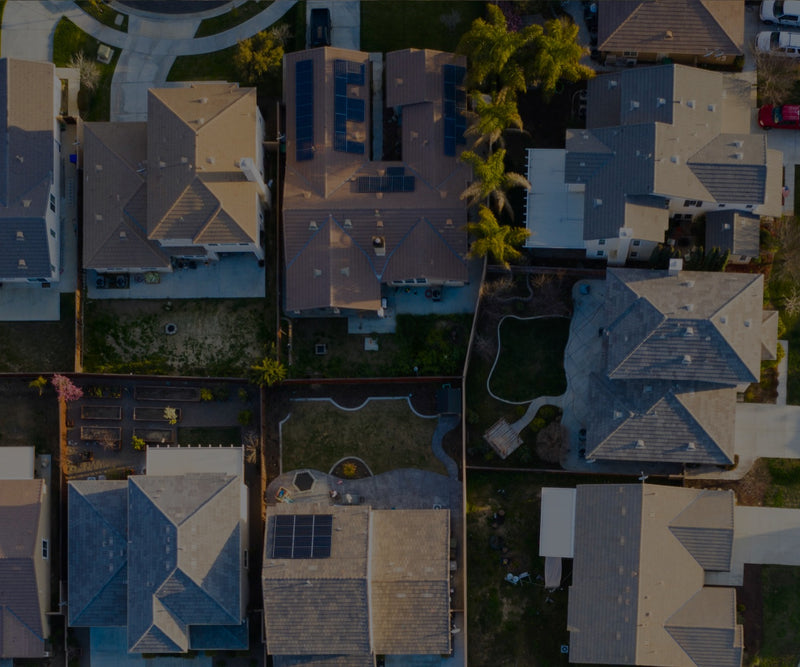Is Your House Good for Solar: Solar Panel Evaluation Guidelines

While the benefits of solar are clear, that doesn’t mean that solar is right for everyone. So before you go and buy a DIY Solar Kit, you should first ask yourself: “Is my house good for solar?”
There are certain requirements you’ll need to meet to ensure that solar is a sound investment for your home or business. In this article, we’ll explain what factors you need to take into account to do a proper solar panel evaluation.
5 Solar Panel Evaluation Guidelines to Follow
We present you the 5 key factors to consider when evaluating if your house is good for solar or not. After you cover all four elements, you’ll have a clear idea of whether your home is good for solar or not.
Do you own or rent your property?
First and foremost, solar is most accessible if you own your home.
If you live in a rental property, it may be a tough sell to convince your landlord that going solar is a good idea. Since tenants are usually responsible for paying the monthly electric bill, the energy savings from going solar aren’t passed on to the landlord, leaving them little incentive to invest in a solar power system.
Though solar has been shown to increase property values by around 3-4%, there’s no guarantee the owner would fully recover the up-front costs of solar, making solar panels a low-priority improvement for investment properties.
That all changes if you own your home. You’ll be able to enjoy the savings from reduced electric bills each month, and your solar panels will likely boost your home’s sale price if you put it on the market in the future. There’s no doubt that solar is a profitable investment for homeowners with access to the utility grid.
If you do rent, not all hope is lost. There are community solar programs designed to help renters enjoy the benefits of solar. Community solar is an off-site solar power plant that provides an affordable alternative to public utility power. For those who can’t install solar on their home, community solar programs give anyone the option to buy into solar at a lower rate than what the utility companies charge.
For more information, read Solar For Renters: How to Go Solar Even If You're Leasing.
But if you do own your home, continue reading to discover the next factors you should consider as part of your solar panel evaluation.
Do you have space on your roof (or ground) for a solar power system?
Solar panels produce the most power when they face directly toward the sun. As part of your solar panel evaluation, check if you have a suitable location to mount your panels so they receive direct exposure to sunlight.
Most residential solar systems in the United States are built on South-facing rooftops, though East- and West-facing arrays work just fine as well. North-facing arrays aren’t particularly viable because they face directly away from the Equator (the path the sun follows through the sky each day).
A South-facing array will generate the most kilowatt-hours (kWh) of energy because it has the most direct exposure to sunlight. However, you may get more value from your panels by facing some or all of them to the West.
Some utilities charge higher time of use (TOU) rates during the busiest times of day - typically around 5-9pm, when people are coming home from school or work and demand on the grid is at its peak. If that is true for you, facing panels to the West can end up saving more money on your electric bill by generating energy later in the day, when rates are highest.
The bottom line is that South-, West-, and East-facing roof-mount systems will generate enough energy to be a sound investment, so long as you have space on your roof to install enough solar panels to cover your needs.
If rooftop solar isn’t a good fit, you can opt for a ground mount system instead. Ground mounts take up more space on your property but allow you to configure your system in any orientation you want.
Learn more about the pros and cons of roof vs. ground mount solar systems.
Is your roof in good condition?
Solar power systems are designed to work for 25+ years. Before going solar, evaluate whether your roof is in good enough condition to support a solar array.
Newer homes tend to be over-engineered so that you can fit the extra weight of a solar power system without making any reinforcements to your roof materials. If your home was built recently, it’s likely that your roof is already strong enough to serve as the foundation for your system.
However, older rooftops may have some wear and tear that can cause leaks and compromise their structural integrity. Even if your roof is holding up now, it may well fail sometime during the 25+-year lifespan of your solar panels. If that happens, it’s a real headache to uninstall your solar panels, re-roof your home and re-install your solar panels. Solar installation isn’t cheap (we figure it costs $7,000-$9,000 to hire someone to install a 7 kW system), so you want to do everything in your power to make sure you only have to install it once.
If you’re concerned about the integrity of your roof, a structural engineer can inspect it and advise whether you should consider a roof replacement before opting for solar. (Of course, a ground mount system is always a viable alternative to rooftop solar if you have space on your property.)
Will the solar panels be blocked by shade/obstructions?
Solar works best in full sunlight. Check your build space for trees, chimneys, and other obstructions that may cast shade on your panels and limit their output. While PV optimizers and microinverters can help solar panels perform better in a modest amount of shade, excessive shading will cause your system to lag behind its expected output.
When conducting a site evaluation, look for a build space that receives as much sunlight as possible. Keep in mind that shadows get longer in the winter months. If a shadow just barely misses your roof in the summer, it’s likely that it will creep over the edge of your system and limit its output somewhat in the winter months.
How much sunlight do you get each day?
Not all build sites are created equal; some get more sunlight than others. To use an extreme example, a solar system in the Arizona desert will be exposed to nearly twice as much sunlight, and produce twice as much usable power, as one installed in the frigid reaches of Minnesota.
While grid-tie solar provides a positive return on investment no matter where you are in the US, the payback period will be extended in areas with low solar exposure. To see how many sun hours you get in your location, check NREL’s solar resource maps.
What are sun hours?
The term “sun hours” does not refer to the number of daylight hours in your location. Instead, a sun hour is a specific unit of measurement, calculated as an hour of sunlight that reaches 1,000 watts of power per square meter.
In layman’s terms, “sun hours” refers to the amount of time the sun is shining strong enough to power your solar panels. Most locations receive an average of 4-6 usable sun hours per day. The more sun hours you get, the fewer solar panels you need to install to meet your target energy goals.
If you’re curious how sun availability affects your solar system sizing, check out our step-by-step guide to sizing a solar power system.

Solar Calculator

Which Solar Kit Do I Need?
GET STARTED WITH SOLAR
WE’LL HELP YOU FIGURE OUT YOUR SOLAR NEEDS!
Fill out the form for a complimentary solar quote that includes a custom satellite layout, system design and a breakdown of total project cost and estimated savings.
